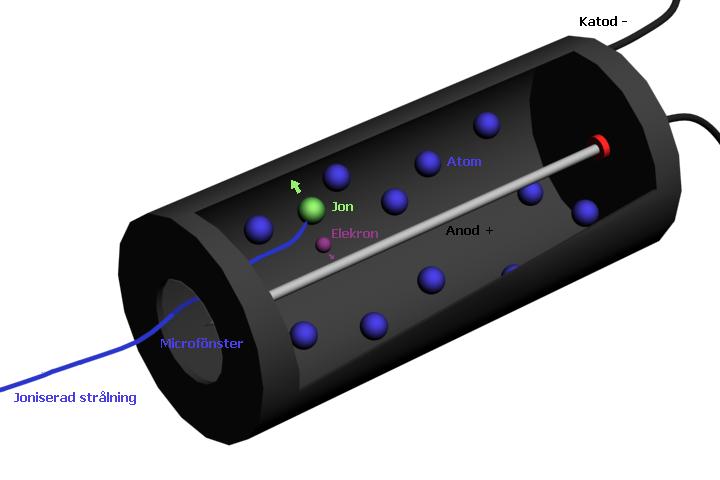 The most popular form of radiation detector used is probably
the Geiger-Mueller (GM) detector. A GM
detector is typically the device seen being used on TV shows and movies when
measuring radiation. The GM detector is the
device which is making clicking noises which clicks faster and faster when it
is exposed to increasingly greater amount of radiation.
The most popular form of radiation detector used is probably
the Geiger-Mueller (GM) detector. A GM
detector is typically the device seen being used on TV shows and movies when
measuring radiation. The GM detector is the
device which is making clicking noises which clicks faster and faster when it
is exposed to increasingly greater amount of radiation.
A GM instrument is really useful for detecting gamma radiation although this is generally the most common form of radiation being sought (although a GM is also often used to find contamination). There are other forms of radiation and many more types of radiation detectors but the GM detector is really fairly simple and robust. The GM detector design has largely been the same for almost 100 years.
To understand how a GM detector works, you probably need to start with a basic understanding of an electrical capacitor. An electrical capacitor is found in virtually every electronic device in one form or another, this is a device which can store electricity as though it were a tiny battery but it is used for so much more (such as in a GM detector).
The simplest form of an electrical capacitor is a pair of metal plates placed face to face very close to each other. If you connect one of the plates to an electrical ground, then you can store electrical charge on the other plate.
Most electrical circuits use this capability to change the shape of electrical pulses and signals in one way or another but a GM detector uses it to store as much charge as it possibly can. In fact, a GM detector has so much charge stored on its capacitive surfaces that it is almost ready to spark across the gap to relieve this large difference in potential. In this state, just a small electrical push is all that is needed in a GM detector to actually cause it to spark and equalize the charge on the two conductive materials.
When you have a capacitor in this state, just the small amount of ionization which occurs from a single radiation interaction between the conductors is enough to cause it to spark and so release the charge stored up. This is effectively what the GM detector is, a capacitor which continually recharges the capacitor each time it discharges to get ready to detect another radiation interaction. Each radiation interaction then triggers a little speaker to give off a click and so alert the user about a detection event.
The radiation interaction being detected is really just a single ionization event in the capacitor volume. When a gamma photon interacts with materials (including gas), this typically occurs with the photon knocking into an electron orbiting an atom and kicks it off the atom leaving the atom ionized. This ejected electron when inside the capacitive volume of a GM detector is enough to induce the spark and result in the characteristic ticking sound for which this design is most readily recognized.
A typical GM detector is sensitive enough to measure normal background gamma radiation from nature. At levels around 100 times greater than this, federal and state regulations start to require controls and protection. Around 1000 times background levels, health effects just start to become observable.
Moving away from a radiation source is extremely effective
at reducing exposures. If your GM
detector were reading 1000 times background levels at 1 foot from a high
activity point gamma source, you would know it is not safe to stay by that
source for long periods of time. By the
time you simply moved 10 feet away from that same point source, your GM would
show you that the radiation would already be down to around 10 times
background.
Basically, every time you
double the distance from the point source, the radiation field would decrease
by a factor of 4 as measured by your GM detector.
Top image: Robert Sundström. CC BY-SA 3.0





Comments